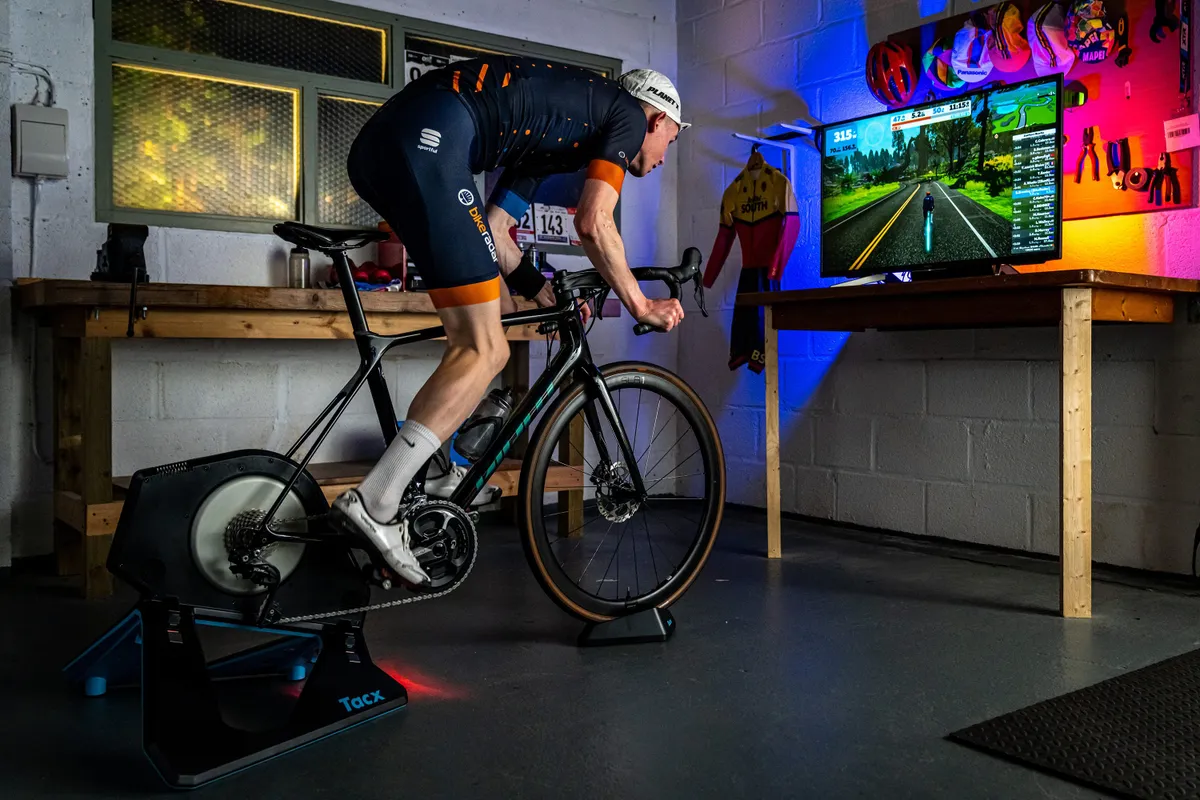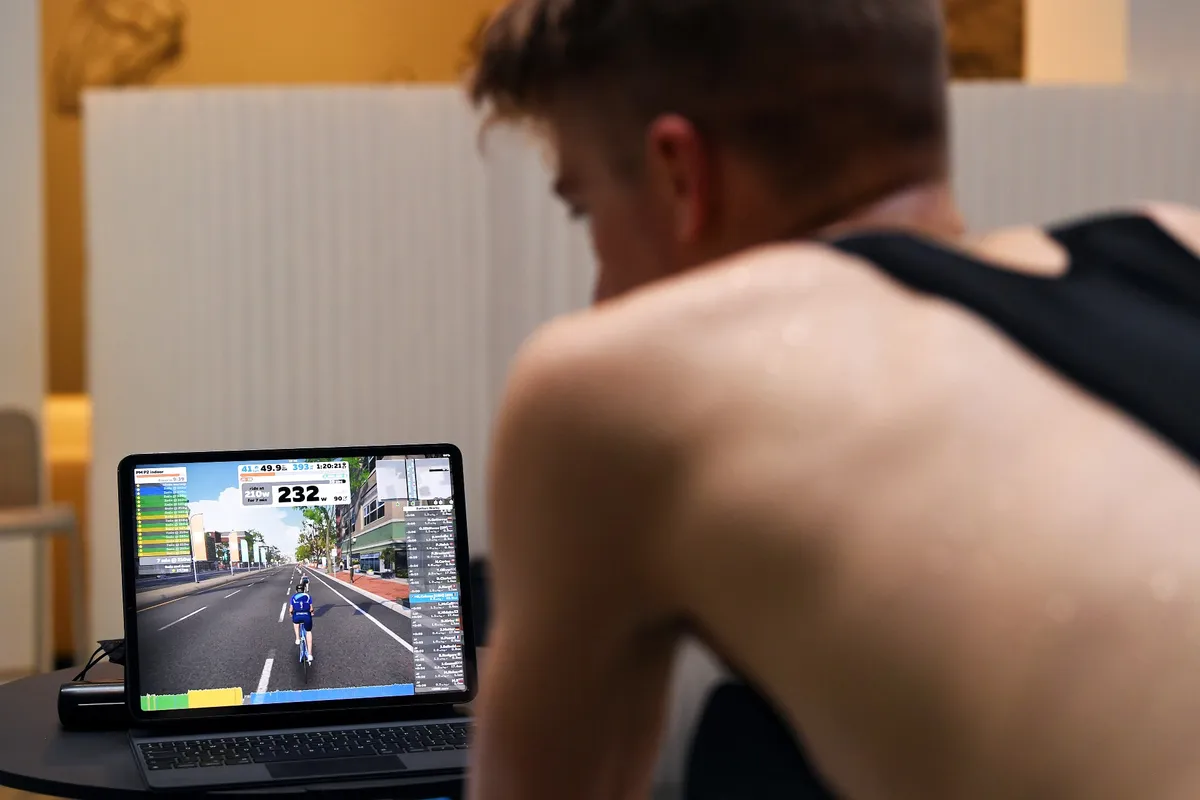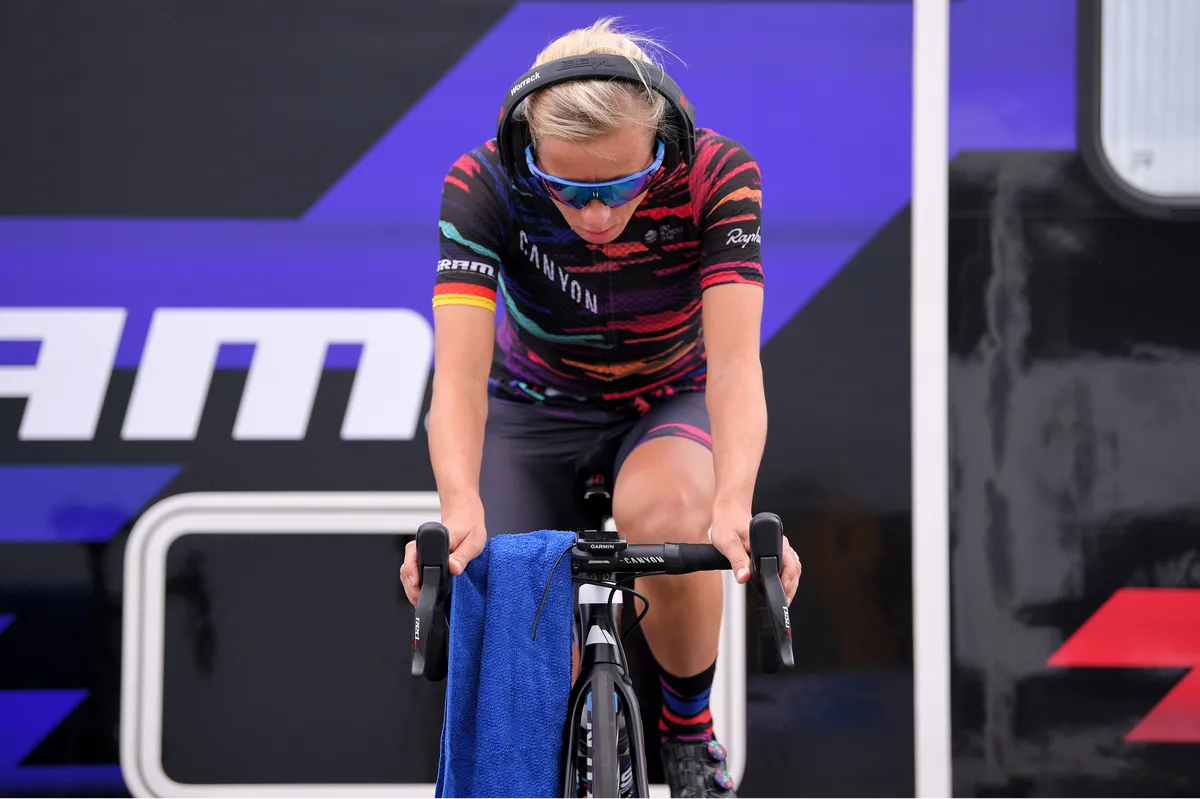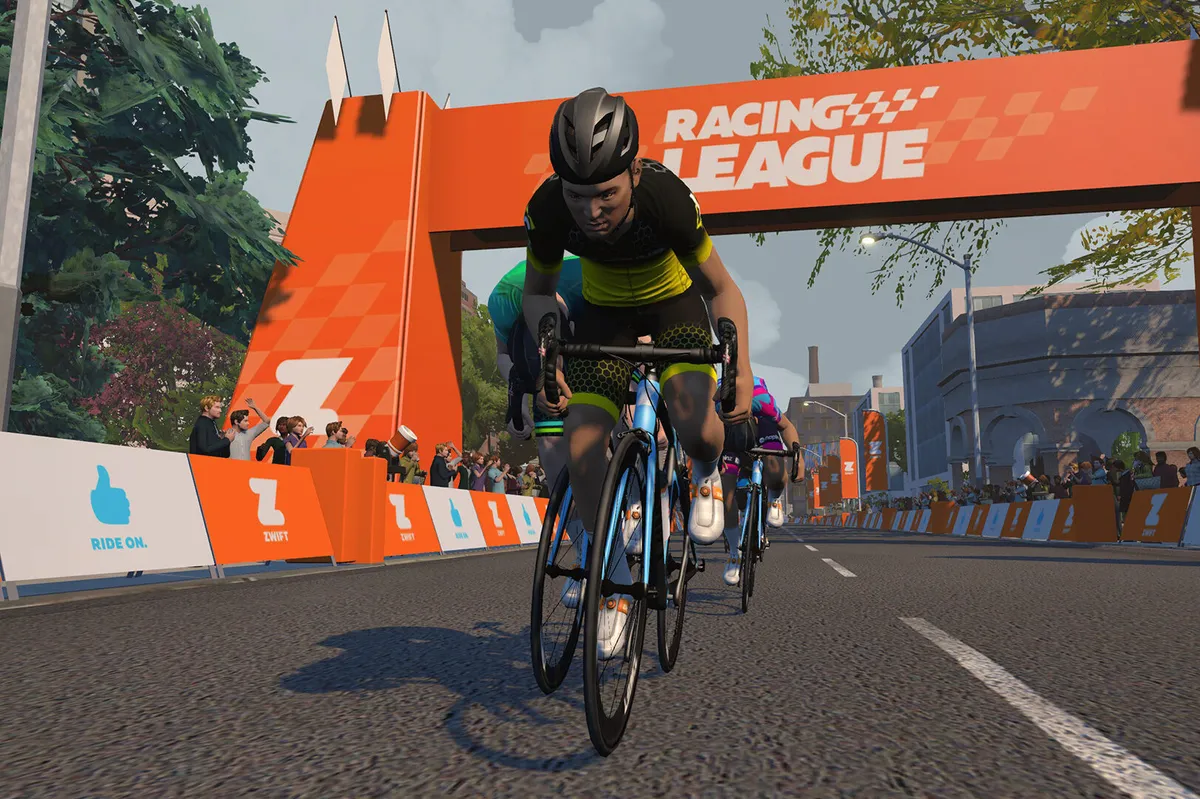Alongside getting to grips with indoor training when the weather won’t play ball, I’ve recently dipped my toes into virtual racing.
Like many indoor training newbies, I’ve learned quickly when virtual racing on Zwift, making mistakes along the way. Some are classic first-time fodder, some a lack of tactical awareness, while others are plain forgetfulness or stupidity. Or both.
Recently, I spoke about some of those ‘learnings’ on the BikeRadar podcast with senior tech writer Simon von Bromley.
We discussed timeliness, planning ahead, the unique nature of virtual racing and how to approach it. We also tackled the difficult subject of sporting honesty.
1. Turn up on time

This sounds obvious, but showing up to a race late was my first big mistake, and I know I’m not alone.
Every time the flag drops in a Zwift race, there are always a few who end up joining late or get left behind.
I naively expected to be able to switch on my trainer and computer with a few minutes to spare.
But, by the time my computer had loaded Zwift, connected to my smart trainer and heart rate monitor, and loaded the virtual world, more than 30 seconds had passed since the start of the race. Game over.
I advise loading Zwift and sorting your connections at least 15 minutes before a race.
This should give you time to troubleshoot any technical issues, while giving you breathing room away from distractions to get into ‘the zone’.
2. Settle into the pen early

It’s also easy to leave loading your race until it’s too late.
Assuming you’ve got everything working, you’re at liberty to do as you please until the flag drops.
The smart option is to use this time to warm up (more on that later), so you might choose to ride in any of Zwift’s available worlds to get your legs spinning and your heart rate up.
As the time of your race approaches, the bottom-left corner of your screen flashes up with a dialogue box, displaying a countdown to your start time.
As you’re racking up virtual drops (Zwift’s version of currency) and kilometres, it can be tempting to keep riding to rack up as much as you can before you start.
However, be warned. Leave it too late – like me – and you might miss the start. Again.
Older computers are more susceptible to longer load times, but it’s always worth factoring in a reasonable five-minute buffer to get your avatar in the start pen and ready to race.
There, you can use the remaining time to keep spinning your legs, make sure you have everything you need, climb off and stretch, or even top up your water bottle.
You’d be amazed at how easy it is to leave your towel tantalisingly out of reach, too.
3. Get your call setup dialled and respect the etiquette

It’s great to be able to chat with your teammates when racing.
A bit like a pro’s team radio, you can shout encouragement, call out course features, or communicate a calming of the pace to help teammates time their effort to bridge a gap.
You may even be lucky enough to have a teammate willing to sit a race out so they can be a de-facto directeur sportif.
Just remember to mute your microphone when you’re not intending to speak – it's quite off-putting to hear the panting of an unmuted rider when racing.
Most call services used by Zwift racers are one-way. This means you're unable to chat when another person is transmitting.
This leaves you at the mercy of whoever shouts loudest, and if someone has a particularly noisy indoor trainer, this can block the audio for everyone.
I highly recommend using earphones (rather than your built-in computer microphone) to help focus on your voice, rather than ambient noise.
4. Warm up properly

It is important to spend time properly warming up before a virtual race.
Warming up improves performance and reduces the chance of injury, but the nature of racing in Zwift makes it doubly important.
Unlike a real-world race, where there are ebbs and flows in pace, a Zwift race starts off hard, and stays hard.
A virtual race will start with an effort well above threshold power to sort out the pack, after which most will need to hang on in the main bunch as long as they can.
The pace is always pushed by the strongest riders (I’ve never been one of them), and this causes a washing machine effect, where weaker riders are circulated through a peloton.
But instead of being able to come back through the pack in the draft, many simply hang on for dear life.
Then, almost inevitably, when you can’t pedal any harder, you’ll find yourself out the back, out of the virtual draft, and out of the reckoning.
The delayed response of avatars and the compressed time schedule (compared to a multi-hour road race) both contribute to this.
The physical separation from your fellow competitors also reduces the ability for common sense to prevail. Where in the real world you might appeal for calm at the front of the peloton, when virtual racing, it’s nigh-impossible.
So, in order to hang on as long as you can, a warm-up is crucial to get yourself functioning at peak efficiency from the off.
5. It’s easy to be hard on yourself

I set high standards for myself – too high, one could argue.
I can’t help but want to see improvements every time I ride or race.
Nevertheless, it can be demoralising when the tough realities of Zwift racing bite, and you’re left wondering if you’ll ever be able to compete at the sharp end.
There’s no getting around the characteristics of virtual racing, sadly.
I’ve learned taking each race with my own goals, and being realistic with them, is key to making the most of my time while racing.
Instead of aiming to see big jumps in performance, or going out well over my maximum potential and dying a thousand deaths before crawling to the finish, I focus on making small improvements in placings with each race.
If you take part in a league or regular race series, you can encounter familiar riders to pit yourself against.
This often means starting hard, then finding a group within a few minutes you can settle in to.
Or you can simply follow someone you’ve raced against and been competitive with previously. Then, it’s game on.
For me, focusing on how I race, and my effort, helps me get the most out of the event.
This makes Zwift racing more fun.
6. Be honest – and accept others may not be

As long as there has been sport, there have been cheats.
Zwift isn’t immune to this, and while the platform does its best to enforce specific rules, there are no guarantees everyone will be honest.
There have been a number of high-profile examples of cheating, while a cursory look at race results pages feature power-to-weight ratios that can leave you scratching your head.
As a ‘C’ category racer (where my output needs to be in the region of 2.5 to 3.2w/kg), I’ve sometimes finished races to find the top 20 littered with racers averaging far in excess of this.
Zwift works out your category by using your three best 20-minute power ratings from recorded races in the previous 90 days.
However, none of this will stop someone from entering the wrong weight (innocently or otherwise), which can have a significant impact on your power-to-weight ratio.
It also can’t stop those who are too strong for the category they’re racing in from competing before they get upgraded.
To its credit, Zwift disqualifies riders (and upgrades their category for the next race, if necessary) who achieve power-to-weight ratios well in excess of the theoretical upper limit of a category, but that doesn’t stop those riders taking part in a race in the first place.
Moreover, in the past, I’ve been upgraded automatically to a ‘B’ category racer (3.2 to 4.0w/kg) – despite finishing nowhere near the front end of my ‘C’ category race.
I approach virtual racing on my terms, and I do my best to keep my weight stats accurate, so that I get the most out of it.
Am I fastidious and weigh myself every time I’m about to hop on the trainer to do a race (or any session where watts-per-kilo matter)? No. For a number of reasons, I don’t think that’s particularly healthy.
But I do pay attention to my stats so that they’re very close to my actual weight, meaning I get a representative extrapolation of performance on the screen in front of me, and I’m fair to others around me.
In short, that’s what motivates me, and I encourage anyone to think the same way.
